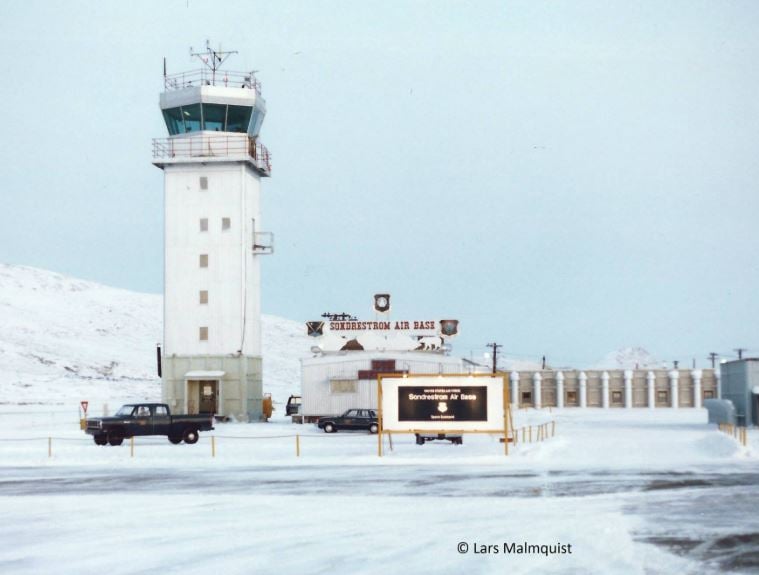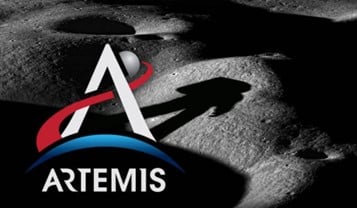In the mid 1980’s, while serving in the Canadian Air Force, I had the good fortune, on one of my many adventures, to fly into Sondrestrom Air Base in Greenland. The Base is at the head of a beautiful fjord, so the scenery during the flight to Sondrestrom was magnificent. We arrived in the early summer on a beautiful clear day. I got out of the plane and wandered around the base while the aircraft was being serviced. One feature that caught my eye was all of the bright yellow ropes and stanchions that were strung from building to building. I couldn’t figure out what they were for, so I stopped one of the locals and asked, “Why the Yellow Ropes?” Now, for those who are not students of the geography of Greenland, Sondrestrom is north of the Arctic Circle, and, apparently, the weather is not always as bright and clear as it was that day! As a matter of fact, one of the meteorological phenomena in the area was virtually instantaneous whiteouts, caused by snowstorms funneling up the fjord. Several people had been caught out between buildings and become disoriented during a blinding storm, a dangerous thing during the long darkness of winter. To eliminate this danger, they had put up the yellow ropes to safely guide people to their destination.

For some reason, that image of bright yellow ropes guiding people to their destination, really stuck in my head. I use it as a reminder whenever I am faced with the unknown or trying to solve a tough problem, which has happened frequently in my evolving roles as an Air Force leader, aerospace professional, engineer, program manager and now, VP of sales for Concepts NREC.
So, how do you set up these “Yellow Ropes”? First, ask yourself: where do I want to be, and how do I know if I’m venturing off the path? I find it to be an important exercise, especially when I don’t know what the outcome might look like. Approach the problem by carefully analyzing it, understanding the underlying issues (use The 5 Why’s), researching what others have done in similar situations and then making some educated assumptions. Perhaps the most important part is to define the nonnegotiable items that MUST be part of the solution. For an engineering problem, these might be the specs your customer needs met. It is also helpful to clearly demarcate where you don’t want to end up, so you only explore the most likely outcomes, rather than going down a million different ratholes.
Later in my career, while advising governments on public procurement, I saw the value of this approach in action within large complex projects. The people in charge of these huge procurement projects understood that they would be buffeted about by a flurry of input (pun intended), much of it contradictory. These folks have learned the hard way that they have to erect their “yellow ropes” prior to starting the process to help ensure they don’t get lost in that blizzard of input. They proactively assess their options ahead of time, as best they can, so they can recognize which solutions have the best chance of success. Most importantly, they establish a set of criteria by which all options will be compared.
Turbomachinery problems are most effectively solved in the same manner. As experts, with over 60 years of experience working with some of the toughest problems in the industry, Concepts NREC helps our customers set those Yellow Ropes and get safely to their destination. We do this by establishing a set of realistic boundary conditions and understanding which variables are critical for success.
We have been solving tough problems across a broad-spectrum of industries for a long time, including one that is very near and dear to my heart, aviation. Here is just a sample of some of the projects we have done for Pratt & Whitney, Rolls Royce, GE, U.S. Airforce, and others:
- Environmental cooling & heating systems for the B-70 Bomber (1958)
- Analysis of application recuperators for GE's T-64 aircraft engine (1961)
- Pressure losses in transonic & supersonic compressors (1962)
- Study of vibration of blades in axial turbomachinery for Rolls Royce (1965)
- Supersonic fan design for C5A aircraft (1966)
- Combustion instability testing in ducts and afterburners for the F-111 (1967)
- Studies for the FAA on aircraft emissions (1974)
- Developed patented Air Dynamometer (VAROC) that doesn’t use water or electricity to test helicopter engines (1977)
- Created a ducted fan for McDonnell Douglas for a new concept helicopter that operated with NO TAil Rotor (NOTAR) (1986)
- Develop a reverse-flow annular combustor for prototype of new aero-engine (1988)
- Developed an aircraft-engine-driven centrifugal compressor (EDC) to provide cooling for the abundant on-board electronics of a submarine reconnaissance plane (1990)
- Designed NOTAR fan for MD900 helicopter (1991)
- Developed multi-stage turbochargers for UAV used in atmospheric testing (1992)
- Our CAE and CAM software used by global aviation OEMs (Ongoing for 30+ years)
- Design audits for turboshaft engine (2018)
- Testing of compressor for turboshaft engine (2018)
So, the next time you encounter a tough problem, ask yourself whether you have set up your yellow ropes. If you need any help, contact some experts in the field, they can help guide youto your destination.





